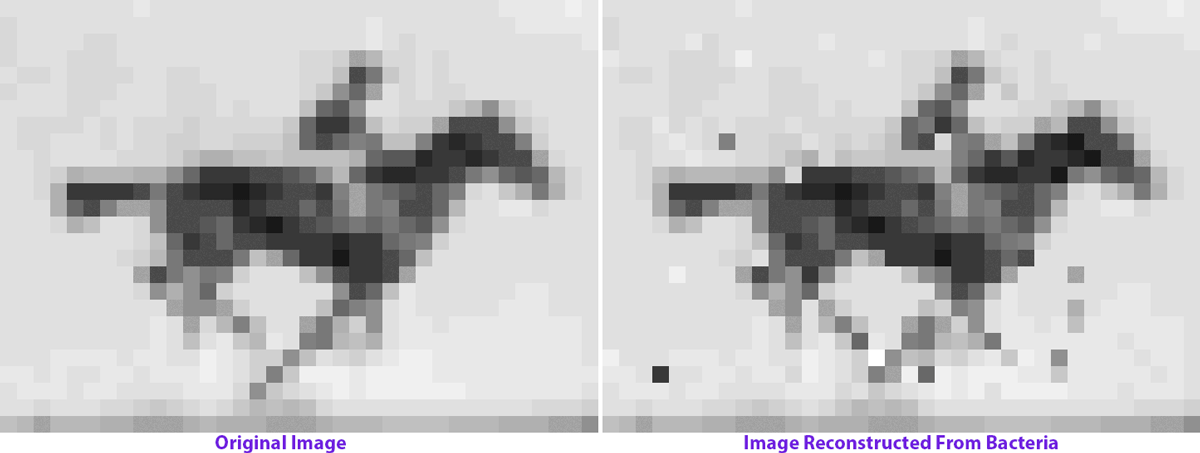DNA used for data storage
.jpg) Researchers have encoded a GIF in DNA.
Researchers have encoded a GIF in DNA.
Images and a short movie from Eadweard Muybridge’s Human and Animal Locomotion have been encoded into the DNA of bacteria using the CRISPR system.
The breakthrough expands on previous demonstrations, which have shown that DNA provides a promising medium for storing digital data within living cells.
Previous studies have shown that information can be transferred into living cells via the CRISPR system, which uses two proteins to insert genetic code into the DNA of target cells.
Researchers have now demonstrates this ability by using the CRISPR system to encode images and a short GIF (five frames of the mare ‘Annie G.’ galloping from Human and Animal Locomotion at 36×26 pixels) in E. coli.
They use nucleotides, the building blocks of DNA, to produce a code that relates to the individual pixels of each image.
For the GIF, sequences are delivered frame-by-frame over time to living bacteria, where they are inserted into the genome in the order that they were delivered.
Once inserted into the genome of E.coli, the data can then be retrieved by sequencing the DNA and the images are reconstructed by reading the pixel nucleotide code, which was achieved with around 90 per cent accuracy.
In addition to establishing that CRISPR can record of practical amounts of data in living cells, the study also reveals new insights into the functioning of the CRISPR system.
For example, the authors were able to determine which sequences are best for transferring data into the genome, which could also guide other applications of the CRISPR system.
The latest paper is accessible here.








 Print
Print